Silberbaum
Julia Riede
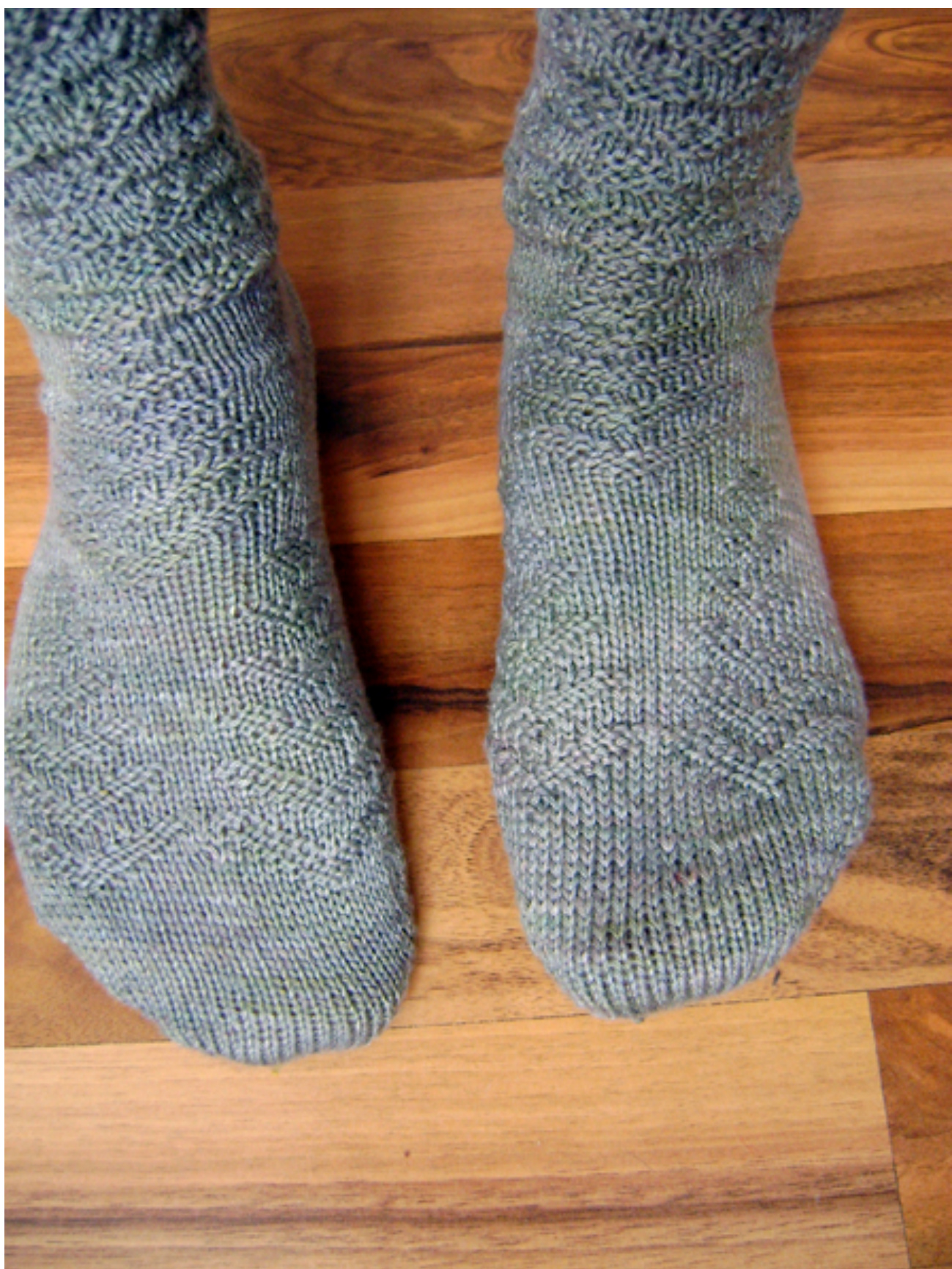
Materials

Sizing One size, please go up/down on needle size to adjust leg and foot circumference. Length is adjustable.
Notes
These socks are knit toe-up with a short row heel featuring textured tree stitch patterns which extend down the leg and over the foot. The cuffis worked in a 3x3 rib. The heel, bottom of the foot and the toes are worked in stockinette stitch. Please note that if doing magic loop you can safely ignore all hints on needle numbers but simply use the following numbers: the sole is worked over 29 sts the instep over 31 sts the heel over 29 sts ( $\mathbf{\dot{10}+9+10}$ short row heel, former sole sts) the leg uses all 6o sts. This pattern uses a standard german heel construction commonly known as double stitch short row hee or Boomerang Heel (some people refer to it as “the Regia heel version" as it is used in the sock knitting tutorials at the website of Regia. I call it the Kylie Heel - it's a way prettier word for boomerang, and indeed socks worked with this type of heel look just like one). The Kylie Heel uses a special stitch referred to as “double stitch" in this pattern. To make a double stitch, insert needle as if to purl with yarn in front. Slip stitch off the needle, pull working yarn strongly to back, so the slipped st falls to the back and the stitch in the row below is pulled up over the right hand needle. You can of course use a standard short row heel over 30 sts as well. Due to the circular construction of the sock, the only parts that are knit back and forth is the heel. The patterned parts and the toes are knit in the round where every row is a right side row. Therefore, the charts are read from right to left (the same direction as you knit) on every row.
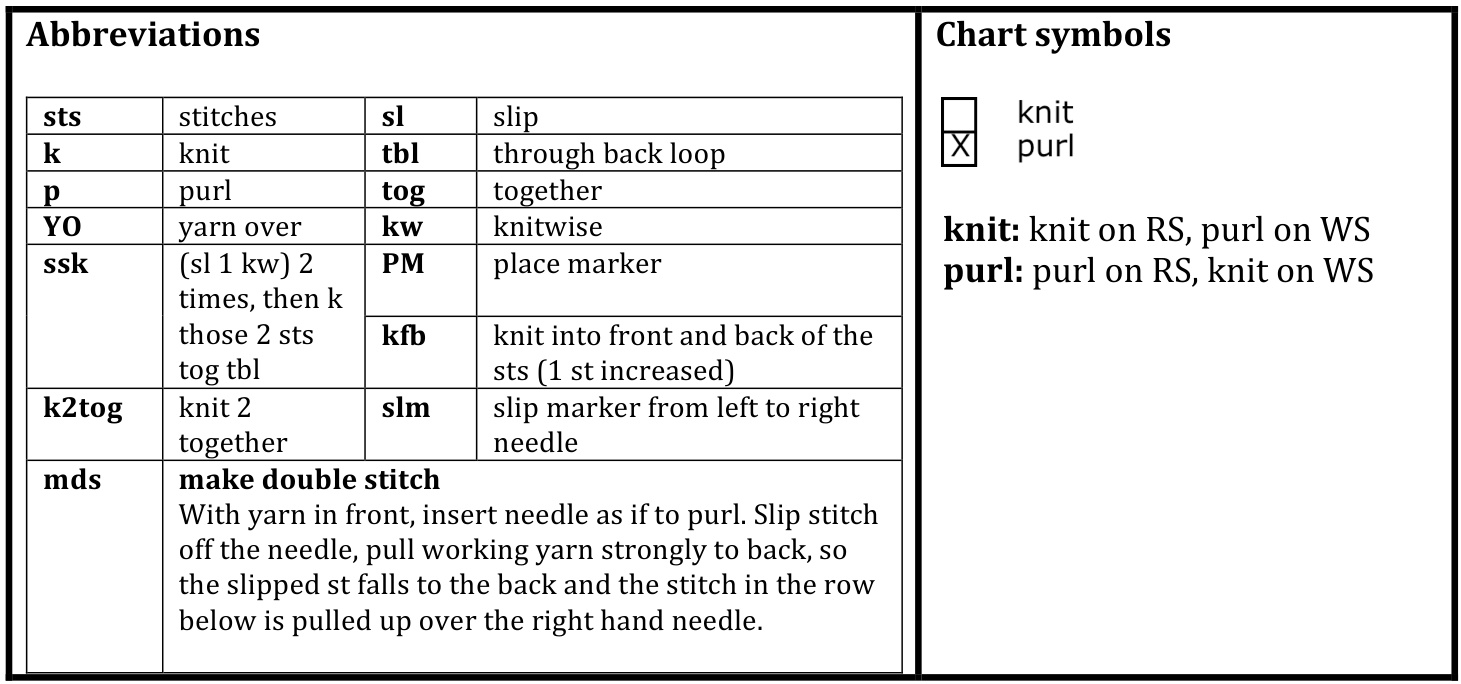
Toes
Using figure eight cast on, C0 12 sts. Knit one round. Next rnd: kfb, k10, kfb, kfb, k10, kfb. Next rnd: knit. Repeat last rows (k12 between the kfb's at the second repeat, k14 between the kfb's at the third etc) until you have worked 9 repeats total - 60 sts on needles. Distribute sts evenly on four needles (15, 16, 14, 15 sts on needles 1, 2, 3, 4). Knit one row.
Foot
The pattern for the instep eventually continues onto the leg depending on your shoes size - please be aware that the heelis worked at a specific position and be careful not to forget about it. Detailed instructions are included below. Row 1: Work row 1 of First Tree chart, k29. Row 2: Work row 2 of First Tree chart, k29. Repeat as est until you have completed all 35 rows of the chart, then continue with the Second Trees chart. Don't forget to insert the Kylie Heel at the appropiate position (see below). Continue to the leg as soon as you have completed the Second Tree chart. First Tree Chart
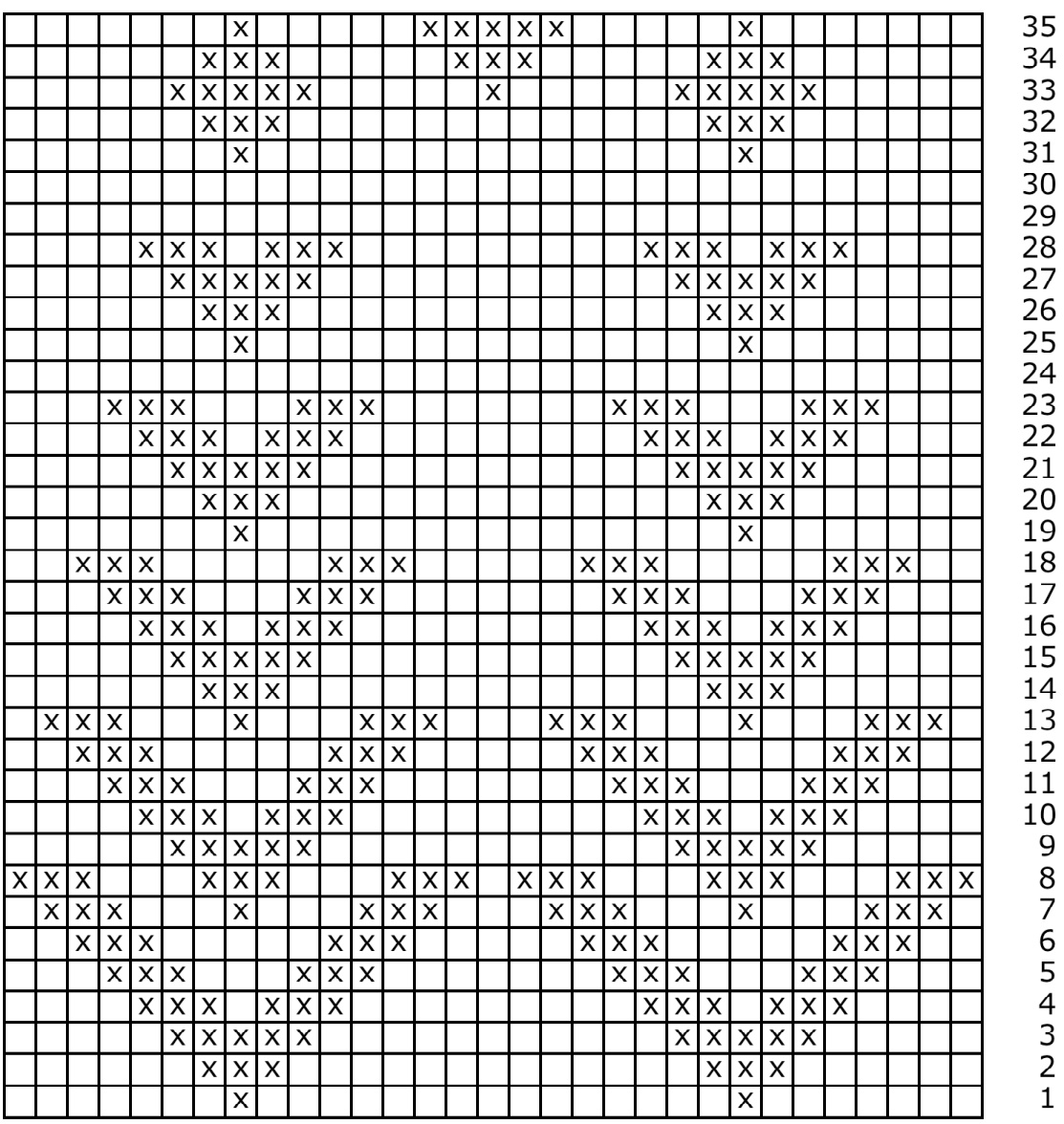
At the same time:
Start Kylie heel as soon as your sock measures $5\;\mathrm{{cm}}$ (2 inches) less than desired foot length. The heel is started at the beginning of needle 3 and is worked over 30 sts (needles 3 & 4).
Kylie Heel
K15, k15 using needle 3, turn work. You now have 61 sts divided on three needles: 15, 16, 30 sts on needles 1, 2, and 3 (needle 4 is not used throughout the heel). Divide the sts on needle 3 into three parts (eventually put markers between the sts): 10,10,10 sts (between markers) on needle 3.
Row 1 (WS): mds, k28,turn. Row 2 (RS): mds, k27 turn.
Row 3 (WS): mds, k26, turn. (You are working each row until you reach a double stitch worked last row, turn, and work a new double stitch just beneath the last one on this side. The double stitches on each side increase by one each row.) Continue in this manner until you have 10 double stitches on each side, making the last double stitch on a right side row.
hieok.Juot kuitting
K29, work row 1 of Main Chart pattern.
Next row (RS): k20, turn. Next row (Ws): mds, p1o, turn. Next row (RS): mds, work in pattern (k or p depending on RS or WS) until you reach the double stitch, work the double st and the following st in pattern, turn. Repeat the last row until you have one double stitch at one end and a double stitch and one stitch to knit left at the other side. You just completed a WS row. Turn. Next row (RS): knit the double stitch, k28. Work next row of Main Chart. Divide sts evenly on 4 needles again.
Second Tree Chart
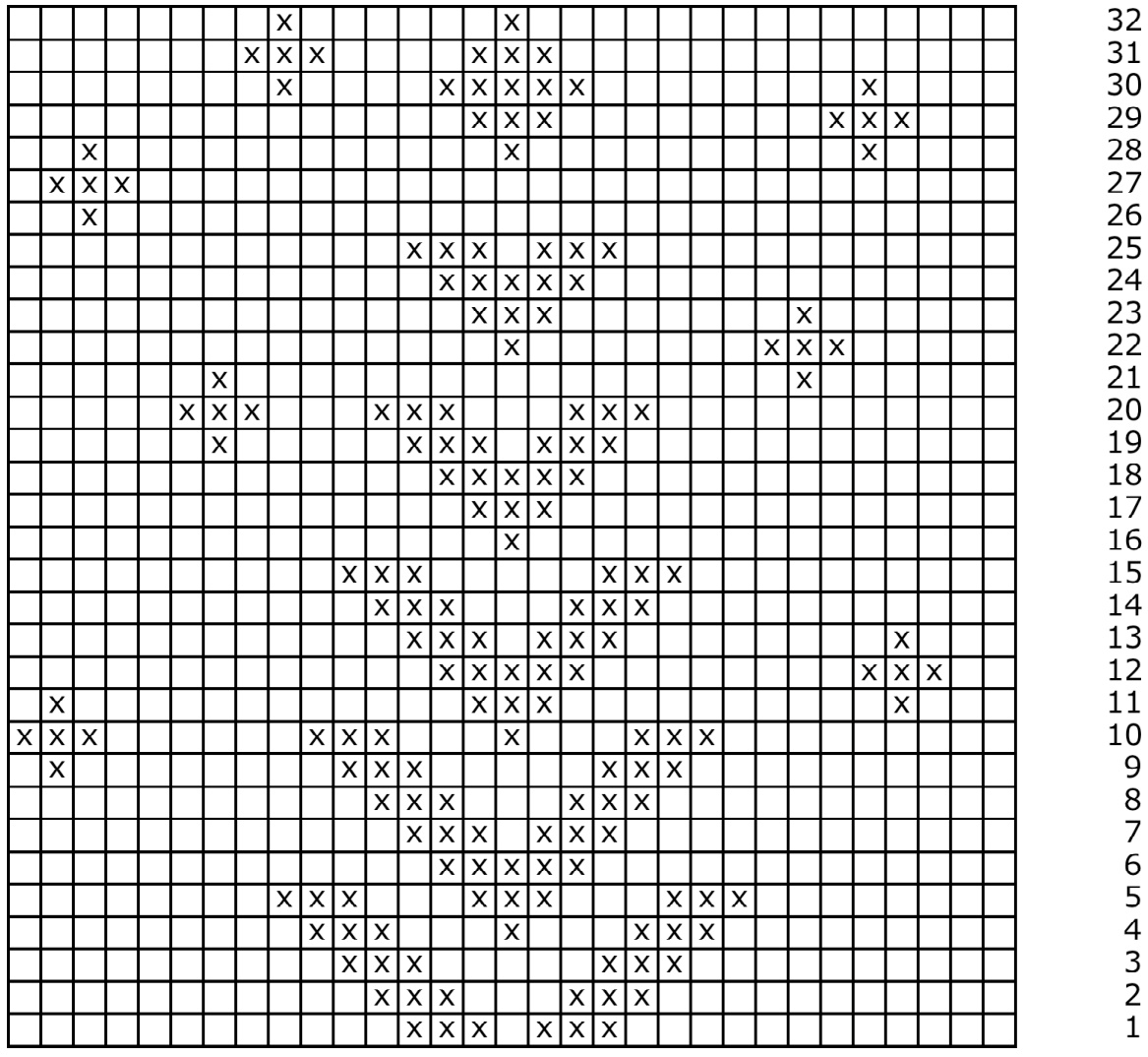
Leg Work rounds 1-12 of Leg Chart (repeat outlined area) 3 times, then work rounds 1-11 once more. Cuff Continuin thek,p2rib pattn establishedat thlast rowjust worked row11ofthL Chart) for 9 more rnds.
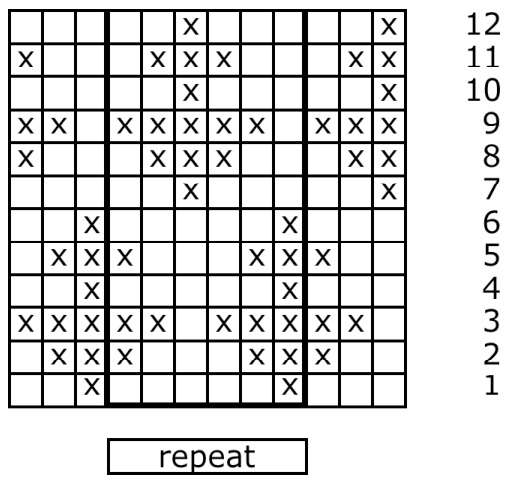
BO loosely. Finishing Weave in ends and block if desired.









